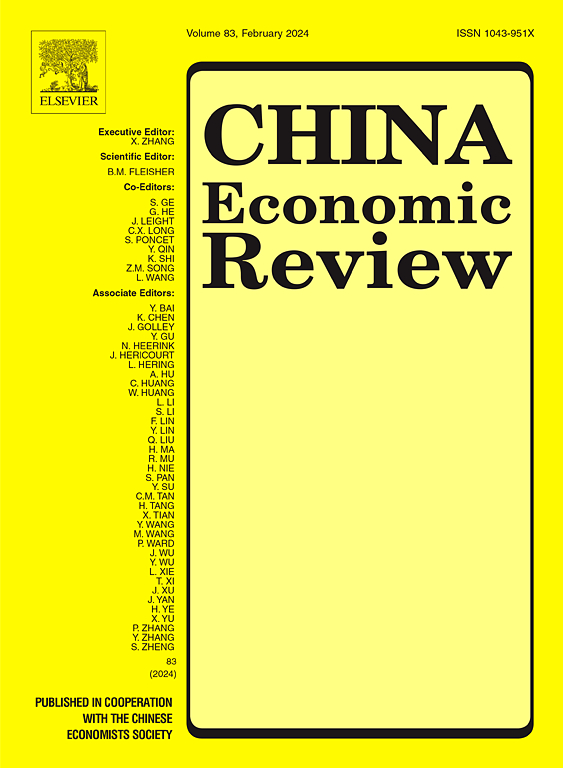How geographical indication products impact agricultural economic resilience: Evidence from China
IF 5.5
1区 经济学
Q1 ECONOMICS
引用次数: 0
Abstract
Geographical indication (GI) products, as intellectual property closely tied to agriculture, rural areas, and farmers, significantly enhance agricultural economic resilience (AER). Using city-level data from 1996 to 2022, this study examines the impact of GI products on AER and its sub-dimensions. The findings reveal that GI products significantly improve AER. Further research reveals that Sunshine and historical-cultural factors play significant moderating roles in the mechanism through which GI products affect the resilience of the agricultural economy. Sunshine exhibit a positive moderating effect in the process where GI products enhance the risk resilience capacity (Risk) and green transformation capacity (Green). Historical-cultural factors also play a positive moderating role in facilitating the improvement of GI products' capacity to promote Green. Geographical characteristics and transportation networks create significant heterogeneity in the impact of GI products. Plains and plateau regions show stronger resilience improvements, while areas with developed transportation networks excel in Risk and Green. Further analysis indicates that during the integrated protection strengthening phase (post-2018), GI products more significantly enhance AER, Risk, and adaptive adjustment capacity (AAC), but not Green. This suggests that green transformation depends more on long-term factors like technological progress and environmental policies. Additionally, cities with stronger communication capabilities exhibit greater economic effects from GI products. Tourism and other communication channels amplify these effects by boosting consumer recognition of “origin reputation.” Based on these findings, this study recommends strengthening GI product protection, leveraging natural and historical-cultural advantages, improving transportation infrastructure, and fully unlocking the potential of GI products to enhance AER.
地理标志产品如何影响农业经济弹性:来自中国的证据
地理标志(GI)产品作为与农业、农村地区和农民密切相关的知识产权,可显著提高农业经济韧性(AER)。利用1996 - 2022年的城市数据,研究了地理标志产品对AER及其子维度的影响。研究结果显示,GI产品可显著改善AER。进一步研究发现,阳光和历史文化因素在地理标志产品影响农业经济弹性的机制中起显著调节作用。阳光在GI产品增强风险抵御能力(risk)和绿色转型能力(green)的过程中表现出正向调节作用。历史文化因素对地理标志产品绿色推广能力的提升也有正向调节作用。地理特征和交通网络造成地理标志产品影响的显著异质性。平原和高原地区的恢复力改善更强,而交通网络发达的地区在风险和绿色方面表现突出。进一步分析表明,在综合保护强化阶段(2018年后),GI产品对AER、Risk和适应性调节能力(AAC)的提升更为显著,而对Green的提升则不显著。这表明绿色转型更多地取决于技术进步和环境政策等长期因素。此外,通信能力越强的城市,地理标志产品的经济效应越大。旅游业和其他传播渠道通过提高消费者对“原产地声誉”的认可,放大了这些影响。在此基础上,本文建议加强地理标志产品保护,发挥自然和历史文化优势,完善交通基础设施,充分释放地理标志产品的潜力,以提高地理标志产品的生态效益。
本文章由计算机程序翻译,如有差异,请以英文原文为准。
求助全文
约1分钟内获得全文
求助全文
来源期刊

中国经济评论
ECONOMICS-
CiteScore
10.60
自引率
4.40%
发文量
380
期刊介绍:
The China Economic Review publishes original works of scholarship which add to the knowledge of the economy of China and to economies as a discipline. We seek, in particular, papers dealing with policy, performance and institutional change. Empirical papers normally use a formal model, a data set, and standard statistical techniques. Submissions are subjected to double-blind peer review.
 求助内容:
求助内容: 应助结果提醒方式:
应助结果提醒方式:


